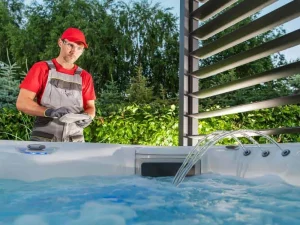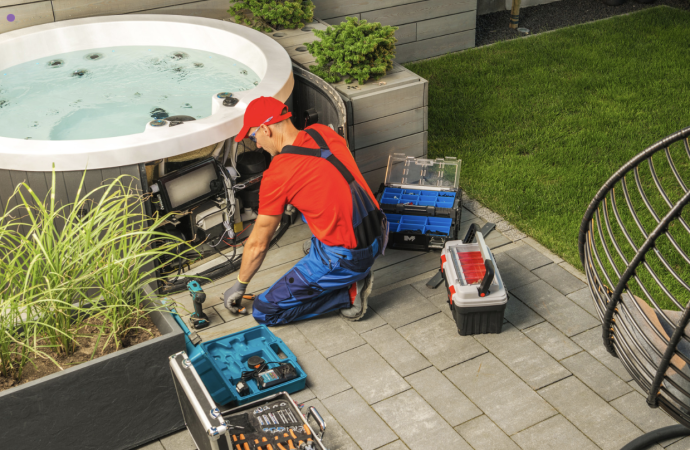Introduction Owning a residential spa is a fantastic way to relax and enhance your home’s value, but like any complex system, spas occasionally require repairs. Unfortunately, some spa owners make mistakes during repair or maintenance attempts that end up costing them more time and money in the long run. Understanding these common pitfalls can help
Introduction
Owning a residential spa is a fantastic way to relax and enhance your home’s value, but like any complex system, spas occasionally require repairs. Unfortunately, some spa owners make mistakes during repair or maintenance attempts that end up costing them more time and money in the long run. Understanding these common pitfalls can help you avoid unnecessary expenses and keep your spa running smoothly.
In this article, we’ll explore the most common costly mistakes made during residential spa repair and how to avoid them, so you can protect your investment and enjoy your spa worry-free.
Residential Spa Repair: Avoiding Common Costly Mistakes

Image by: Yandex.com
1. Ignoring Regular Maintenance
One of the biggest mistakes spa owners make is neglecting routine maintenance. Skipping regular tasks like filter cleaning, water testing, and chemical balancing can cause small issues to escalate into major repairs. Dirty filters strain pumps, imbalanced water chemistry leads to corrosion or scaling, and neglected equipment wears out faster.
Tip: Schedule regular maintenance sessions and stick to a cleaning and testing routine to prevent costly breakdowns.
2. Attempting Complex Repairs Without Expertise
Spas have intricate electrical, plumbing, and mechanical systems. Trying to fix complex problems without proper knowledge or tools can cause further damage. Mistakes like improper wiring, incorrect part installation, or using incompatible chemicals not only worsen the issue but can void your spa’s warranty.
Tip: For electrical repairs, heater replacements, or control panel issues, always hire a professional hot tub technician with relevant certifications.
3. Using Incorrect or Low-Quality Parts and Chemicals
Using cheap, non-genuine parts or incompatible chemicals may save money upfront but often leads to recurring problems or damage. Substandard parts wear out quickly and may not fit properly, while wrong chemicals can cause foaming, corrosion, or poor sanitation.
Tip: Always use genuine manufacturer parts and recommended chemical brands to ensure reliability and safety.
4. Neglecting Leak Detection and Repair
Ignoring or delaying repair of leaks is a costly mistake. Leaks waste water, damage the spa shell, and can harm electrical components. Some leaks are hidden inside plumbing or beneath the spa, making them hard to detect without proper tools.
Tip: Regularly inspect your spa for signs of leaks and engage a technician for professional leak detection if you suspect water loss.
5. Overlooking Seasonal Maintenance
Failing to properly winterize your spa or prepare it for seasonal changes can result in frozen pipes, damaged pumps, and malfunctioning heaters. Conversely, not adjusting maintenance routines during hot months can promote algae growth and water chemistry imbalances.
Tip: Follow seasonal maintenance guidelines or hire professionals for winterizing and spring startups.
6. Ignoring Manufacturer Guidelines
Disregarding the spa manufacturer’s instructions for maintenance, repair, and chemical use often leads to problems. Using non-approved procedures or products can void warranties and result in improper functioning.
Tip: Always refer to your spa’s owner manual and follow recommended practices.
7. Delaying Repairs
Waiting too long to address small issues often results in expensive fixes. For example, a minor pump noise ignored can lead to motor burnout, or a small electrical fault can cause control panel failure.
Tip: Address problems promptly and schedule professional inspections regularly to catch issues early.
8. Overusing the Jets and Heater
While the jets and heater are essential features, running them constantly can cause wear and tear. Overusing the heater increases energy costs and puts unnecessary strain on the heating elements. Similarly, running the jets for long periods can overheat the pump and reduce its lifespan.
Using these features in moderation and following the manufacturer’s usage guidelines will help keep them in good working condition for longer.
9. Skipping Professional Inspections
Even with regular maintenance, it’s wise to have a professional inspect your spa once or twice a year. They can spot issues you might overlook, such as small leaks, worn seals, or electrical problems. Professional inspections can catch these issues early, saving you from costly repairs and ensuring your spa operates safely.
Comparative Table: Common Spa Mistakes vs. Prevention Tips
| Common Mistake | Why It’s a Problem | How to Prevent It |
|---|---|---|
| Skipping maintenance | Leads to clogs, poor performance | Follow a set cleaning schedule |
| Ignoring leaks/noises | Causes bigger, costly damage | Fix issues early |
| Using wrong parts | Can damage equipment | Check manufacturer guidelines |
| DIY without skill | Risk of damage and injury | Hire professionals |
| Not draining regularly | Causes scaling and staining | Drain every 3-4 months |
| Poor water chemistry | Harms spa and skin | Test and balance weekly |
| No winterizing | Pipes and parts can freeze | Drain or insulate for winter |
| Low water levels | Damages pump and heater | Keep water at recommended level |
Market Outlook for Residential Spa Services
With the popularity of home spas rising, demand for maintenance and repair services is expected to grow steadily. More homeowners are investing in spa upgrades, smart controls, and eco-friendly heating systems, which also require specialized care. Companies offering both repair and preventive maintenance packages are likely to see increased business in the coming years.
Conclusion
Avoiding these common costly mistakes during residential spa repair is key to protecting your investment and ensuring years of enjoyment. Regular maintenance, using qualified professionals, choosing the right parts and chemicals, and timely repairs keep your spa operating efficiently and safely.
Taking a proactive, informed approach to spa care not only saves money but enhances your relaxation experience.
FAQs
Q1: How often should I schedule professional spa maintenance?
A1: At least once per year, more often with heavy use.
Q2: Can I use any chemicals for my spa?
A2: No, always use manufacturer-recommended chemicals.
Q3: What are signs of a leak in my spa?
A3: Unexpected water loss, damp areas around the spa, or low water levels.
















